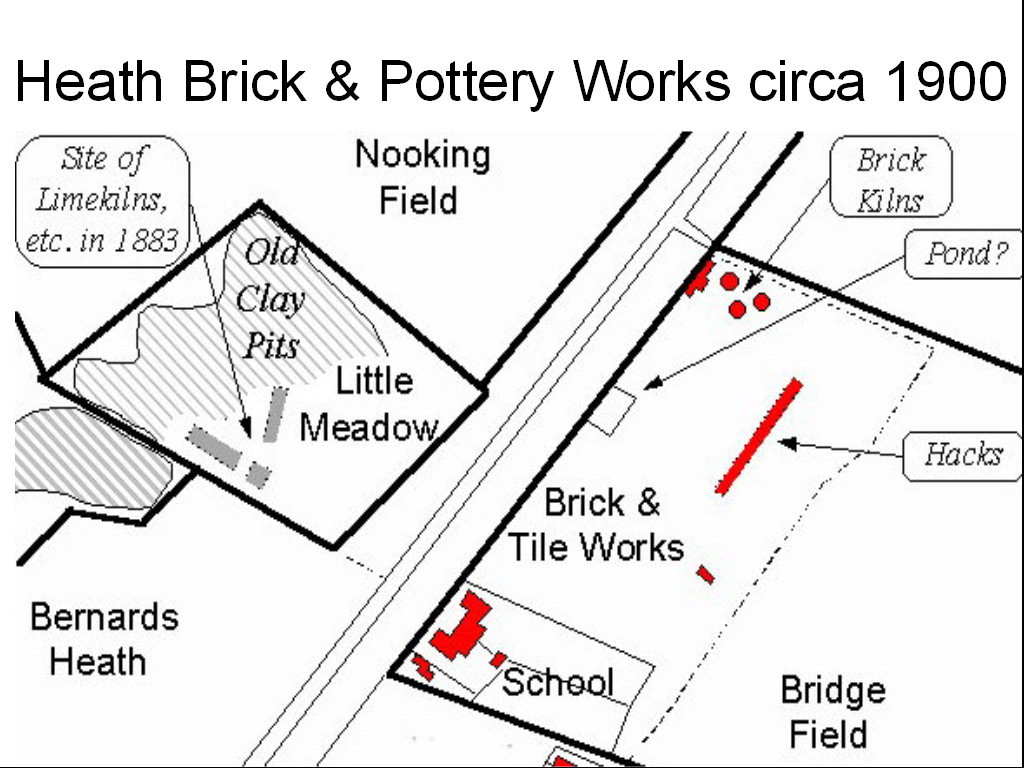|
click on picture for full screen image |
|
|||||||||||
|
The Little Meadow is the site of Fontmell Close. Brickmakers associated with the site in the 19th century were William Bennett, James Vass, Christopher Miskin and Jacob Reynolds. Lime was burnt there for some 50 years to about 1893 and some chalk could have been used in making the bricks. Brickmaking ceased shortly after 1900 and some pits may have been dug in Nooking Field. The big question is where did the chalk to make the lime come from? Were there extra deep holes or even a mine. At a brickworks near Hertford it seems that a number of 20-30 foot deep shafts were dug 5ft in diameter with the chalk being quarried at the bottom - Perhaps something like the shape of the well-known Royston cave. There was also a large chalk mine some miles away at Boxmoor. There is detailed biographical information online on four brickmakers who worked in the area in the 19th century William Bennett (1800-1862): He was a builder who had brick and lime kilns on Bernards Heath and in 1861 his occupation was described as a brickmaker employing 17 labourers. James Vass (1805-1872): Appears to have run the old-established and well-known BRICK and LIME YARD, situate on Bernardís Heath for a short time after William Bennett's death. Christopher Miskin (1830-1930): Predominately a major local builder who also made bricks on the Heath. The brickfield area to the East of Sandridge Road continued as a builders yard long after the brickmaking had finished. Jacob Reynolds (1936-1926): He farmed Heath Farm, and ran a mahor dairy supplying milk to St Albans. His involvement with bricks undoubtedly arose because the brick earth was being dug on the farm. In 1894 he was involved in the installation of a brick-making machine from Australia
|
||||||||||||
| Octoober 2106 | Page Created |





